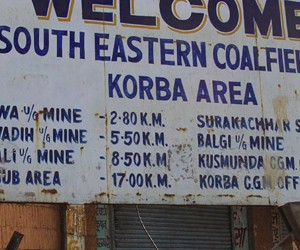Federal Water Tap, July 1: President Obama’s Climate Change Plan
Regulate, Innovate, and Adapt
That is the crux of President Barack Obama’s climate change plan, unveiled in a speech last Tuesday at Georgetown University and in an accompanying 21-page document.
The president proposed actions, with the exception of his budgetary aspirations, that need no endorsement from Congress. In a move sure to face legal challenges, he told the Environmental Protection Agency to prepare rules to limit carbon emissions from existing power plants. He promised new money for renewable energy research and development, and he offered a raft of measures to learn and rebuild from Hurricane Sandy, which walloped America’s densest urban corridor.
Looking abroad, the president called for an international free trade agreement for solar, wind, geothermal and other clean energy technologies. He called for an end to public financing of new coal plants. And he pledged to work harder for a global agreement to cut carbon pollution.
Other new proposals in the plan include: a $US 8 billion loan-guarantee for carbon-capture projects; tighter efficiency standards for appliances and federal buildings; and a soon-to-be-released Energy Department report on how climate change will affect the nation’s energy infrastructure.
Columbia River Treaty
An updated treaty should emphasize healthy ecosystems, particularly for fish, according to draft recommendations from the U.S. review team, which were developed in consultation with states, tribes and federal agencies. Signed by the U.S. and Canada in 1964 the treaty was designed to cover two areas: hydropower and flood control. A final list of recommendations should be delivered to the State Department by the end of the year.
Shasta Lake Project
One of the tallest dams in the U.S. might get a little taller. The Bureau of Reclamation has released the draft environmental review for its project to raise Shasta Dam, on the Sacramento River in northern California. The project’s goals are to improve fish habitat upstream and to hold more water for users in southern California. A federal study completed last year estimated that raising the dam by 5.6 meters (18.5 feet) would cost $US 1.1 billion. Comments on the draft are being accepted through September 30.
Well Grants
The Department of Agriculture’s Rural Utilities Service will hand out nearly $US 1 million in grants for household water-well drilling. Areas affected by the current drought will get top priority. The money will go to organizations who will provide low-interest loans for the wells.
Water Research
The U.S. Geological Survey has a number of reports out on groundwater. One looks at subsidence in the Houston area because of intensive pumping. Another described a 3-D model of the aquifer underlying California’s Cuyama Valley, where groundwater is the sole water source. A third models the water flows in the Ogallala Aquifer in south-central South Dakota.
Federal Water Tap is a weekly digest spotting trends in U.S. government water policy. To get more water news, follow Circle of Blue on Twitter and sign up for our newsletter.
Brett writes about agriculture, energy, infrastructure, and the politics and economics of water in the United States. He also writes the Federal Water Tap, Circle of Blue’s weekly digest of U.S. government water news. He is the winner of two Society of Environmental Journalists reporting awards, one of the top honors in American environmental journalism: first place for explanatory reporting for a series on septic system pollution in the United States(2016) and third place for beat reporting in a small market (2014). He received the Sierra Club’s Distinguished Service Award in 2018. Brett lives in Seattle, where he hikes the mountains and bakes pies. Contact Brett Walton






Leave a Reply
Want to join the discussion?Feel free to contribute!